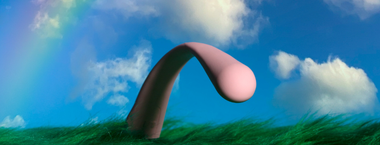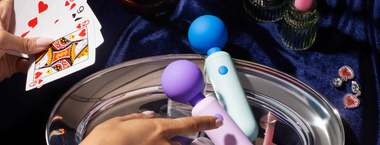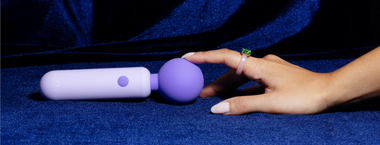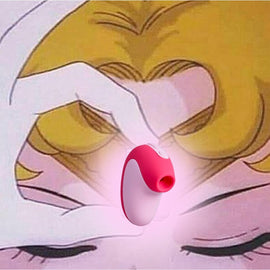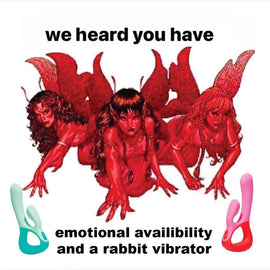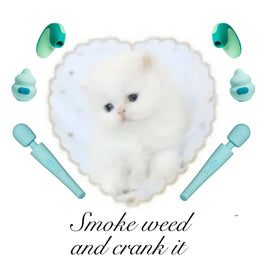A History of Clit, Vagina, and Vulva Worship


Art by Victoria Liu
Far before the words ‘vagina’ and 'clitoris' had to be spoken in hushed tones—or worse, euphemized out of existence—everyone knew how to find a clitoris. No, not just find it. Worship it.
We now live in a culture where female genitalia is politicized, yet hidden. It’s hard to believe that it was ever revered and celebrated. But lo-and-behold, there is a looooong history of vagina and clit worship!
In The Story of V: Opening Pandora's Box (a book that everyone who has or loves a vagina should read), Catherine Blackedge notes that the word ‘vagina’ didn’t appear in English until 1682. However, non-English speaking cultures revered the vag for a variety of reasons. We need to recapture that sentiment. From the clitoris’ 8,000 delicious nerve endings to the vagina being our source of life, female genitalia deserves some SERIOUS recognition.
As A Cosmic Source
Considering the vagina’s role in producing life, it comes to no surprise that in Hindu philosophy, the vagina symbolizes formation of humanity.
In traditional Hindu culture, the embodiment of life itself is distinctly female. The Hindu goddess Shakti represents the divine and cosmic energy from which we are all created. Certain texts like the Kama Sutra refer to the vagina or the “yoni” as a “sacred area, an occult religion worthy of reverence,” and “a symbol of the cosmic mysteries.”
While they value femininity in all of its diversity, texts like the Kama Sutra have been subject to many rewritings and reinterpretations that have muddled their true meaning.
Crops, Fertility, And Warding Off Evil
But it’s not just the vagina as a force, the physical vagina and vulva has often had its own distinct influence. To understand just how willing we once were to embrace the vagina, it helps to look at the goddess Ishtar. As far back as 3500 BCE Ishtar was recognized as the Mesopotamian goddess of love, beauty, sex, desire, fertility, war, combat, and politics—a formidable figure indeed. To celebrate the festival of Thesmophoria, honey and sesame cakes a triangular shape called “mylloi”, representing Ishtar’s vagina, were given out freely. Vagina cakes were just a part of the celebration.
And it wasn’t just a symbolic embracing. The gesture of ana suromai or anasyrma–literally meaning to lift up your skirt and display your genitals—was thought to be able to ward off evil in ancient Greece and other cultures. But the practice didn’t end with antiquity. Another unrestrained expression of vagina worship came in the form of Sheela Na Gigs, which were popular carvings also meant to keep evil at bay.

These carving were of female figures showing off their vulva—often exaggerated far beyond its actual size. They are believed to have originated in 11th century France and Spain, but the practice spread to other areas of Europe. The idea of vaginas being a force against evil really stuck—even as late as the 17th century, we find drinking mugs portraying Satan cowering before a vagina.
The vagina has had obvious connotations of fertility—both in humans and in agriculture. In fact, in Hawaiian mythology Kapo, the goddess of fertility, was able to confound a persistent half-man, half-pig by detaching her vagina and tossing it his way. Not only did it distract him, he then chased the vagina to the end of the earth—an interesting statement about women’s power over their suitors.
One midwife put forward an interesting theory about the relationships between the symbolism of the Sheela Na Gig and other illustrations of the vagina to the more practical sides of fertility. "My idea is that this figure [the naked Sheela Na Gig] was probably meant to reassure young women about the capabilities of their bodies in birth," midwifery guru Ina May Gaskin writes in Ina May's Guide to Childbirth, "As you can see the vulva of the crouching figure is open enough to accommodate her own head.” With childbirth looming, it’s easy to see why women would want the reassurance.
In the U.S.
There’s no doubt that in the U.S., female genitals have become more of a taboo, both in terms of the actual words and in representations of the vulva. We whisper about our own body parts and use euphemisms and patronizing nicknames. Too many children don’t learn the anatomically correct language for genitalia until they have a health class—and then they awkwardly giggle through it.
But the problem exists among adults, too. Worryingly, in 2012 a female politician was banned from addressing the Michigan house of representatives for using the word vagina, despite the fact that they were debating a controversial anti-abortion bill. Another woman claimed to have been fired for using the word while teaching, even though she was teaching Georgia O’Keeffe paintings. As if there is a more appropriate context for using the word vagina than while teaching Georgia O’Keeffe paintings.
The problem with this hesitation to discuss and display vaginas and vulvas in a more open context is that it breeds such unnecessary shame about our own bodies. Luckily, there is some welcome kick back against that taboo. The Labia Library celebrates vulvas of all shapes and sizes. Celebrities are embracing genital piercings–including Lady Gaga’s very public display of an ornate vulva.
Even in a political context, vaginas and vulvas are starting to have their day again. Women are demanding that the US government stays out of their uteruses, wearing pink hats to the Women’s March, and the activist group Pussy Riot, where their very name invokes the power of a vagina.
We have a long way to go. Female genitals have been a taboo for far too long. But with such a rich history of vagina worship and reverence, we have so much to draw from. So it’s time to start worshipping all over again.
Anatomy of Female Genitalia

Photo Source: The Labia Library
About the Author: Léa is a writer and comedian based in London, UK. She writes and speaks about a range of topics including sex, dating, feminism, politics and addiction. Outside work she can normally can be found running, reading, doing yoga, or eating bagels. She has a BA in Political Rhetoric from the Gallatin School at NYU, as well as an LLB and an LLM in Public International Law from the London School of Economics.

Latest Articles

A Hot and Quick Guide to BV, UTIs, and Yeast Infections
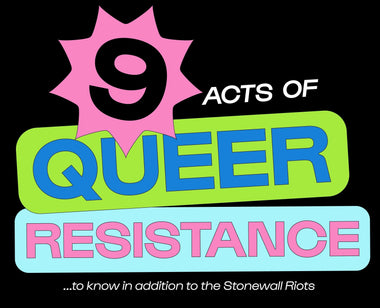
9 Acts of Queer Resistance to Know in Addition to the Stonewall Riots
